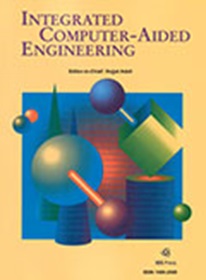Simplified binary cat swarm optimization
IF 5.3
2区 计算机科学
Q1 COMPUTER SCIENCE, ARTIFICIAL INTELLIGENCE
引用次数: 24
Abstract
Inspired by the biological behavior of domestic cats, the Cat Swarm Optimization (CSO) is a metaheuristic which has been successfully applied to solve several optimization problems. For binary problems, the Boolean Binary Cat Swarm Optimization (BBCSO) presents consistent performance and differentiates itself from most of the other algorithms by not considering the agents as continuous vectors using transfer and discretization functions. In this paper, we present a simplified version of the BBCSO. This new version, named Simplified Binary CSO (SBCSO) which features a new position update rule for the tracing mode, demonstrates improved performance, and reduced computational cost when compared to previous CSO versions, including the BBCSO. Furthermore, the results of the experiments indicate that SBCSO can outperform other well-known algorithms such as the Improved Binary Fish School Search (IBFSS), the Binary Artificial Bee Colony (BABC), the Binary Genetic Algorithm (BGA), and the Modified Binary Particle Swarm Optimization (MBPSO) in several instances of the One Max, 0/1 Knapsack, Multiple 0/1 Knapsack, SubsetSum problem besides Feature Selection problems for eight datasets.简化二元猫群优化
受家猫生物学行为的启发,猫群优化算法(CSO)是一种元启发式算法,已成功地应用于求解多个优化问题。对于二元问题,布尔二元猫群优化算法(BBCSO)表现出一致的性能,并与大多数其他算法区别开来,因为它不将智能体视为使用传递和离散函数的连续向量。在本文中,我们提出了一个简化版本的BBCSO。这个新版本名为简化二进制CSO (SBCSO),它为跟踪模式提供了一个新的位置更新规则,与以前的CSO版本(包括BBCSO)相比,性能得到了提高,计算成本降低。此外,实验结果表明,在8个数据集的特征选择问题中,SBCSO在一个最大、0/1背包、多个0/1背包、SubsetSum问题的若干实例中,优于改进的二进制鱼群搜索(IBFSS)、二进制人工蜂群(BABC)、二进制遗传算法(BGA)和改进的二进制粒子群优化(MBPSO)等算法。
本文章由计算机程序翻译,如有差异,请以英文原文为准。
求助全文
约1分钟内获得全文
求助全文
来源期刊

Integrated Computer-Aided Engineering
工程技术-工程:综合
CiteScore
9.90
自引率
21.50%
发文量
21
审稿时长
>12 weeks
期刊介绍:
Integrated Computer-Aided Engineering (ICAE) was founded in 1993. "Based on the premise that interdisciplinary thinking and synergistic collaboration of disciplines can solve complex problems, open new frontiers, and lead to true innovations and breakthroughs, the cornerstone of industrial competitiveness and advancement of the society" as noted in the inaugural issue of the journal.
The focus of ICAE is the integration of leading edge and emerging computer and information technologies for innovative solution of engineering problems. The journal fosters interdisciplinary research and presents a unique forum for innovative computer-aided engineering. It also publishes novel industrial applications of CAE, thus helping to bring new computational paradigms from research labs and classrooms to reality. Areas covered by the journal include (but are not limited to) artificial intelligence, advanced signal processing, biologically inspired computing, cognitive modeling, concurrent engineering, database management, distributed computing, evolutionary computing, fuzzy logic, genetic algorithms, geometric modeling, intelligent and adaptive systems, internet-based technologies, knowledge discovery and engineering, machine learning, mechatronics, mobile computing, multimedia technologies, networking, neural network computing, object-oriented systems, optimization and search, parallel processing, robotics virtual reality, and visualization techniques.
 求助内容:
求助内容: 应助结果提醒方式:
应助结果提醒方式:


